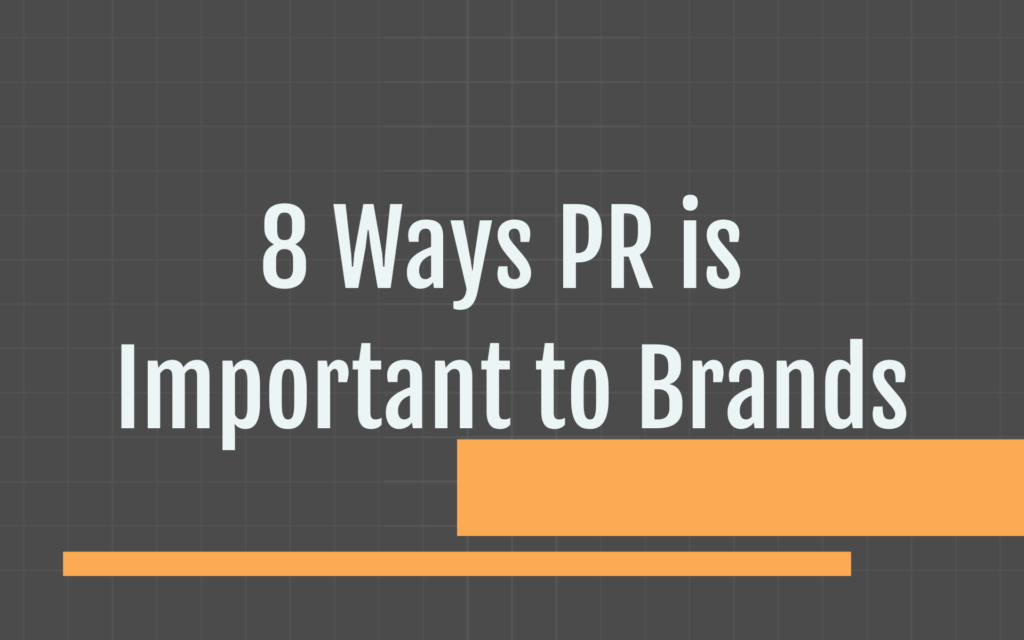Public relations, also known as PR, is the practice of managing the spread of information between an individual or organization and the public. PR professionals work to build and maintain a positive reputation for their clients through various tactics such as media relations, crisis management, and community outreach.
The goal of a PR firm is to create and maintain a favorable public image for clients. This can be achieved through various tactics such as crafting compelling press pitches and organizing media events. PR professionals also play a crucial role in crisis management, working too quickly and effectively address any negative situations that may arise.
Effective PR can greatly benefit an organization by building trust and credibility with the public. This can lead to increased brand awareness, improved customer relationships, and ultimately, increased success for the client. In today’s digital age, PR has become an essential component for businesses and individuals looking to effectively communicate with their audience.
To dig a bit deeper, public relations involves building beneficial relationships between brands and their target audiences through storytelling and engagement with the desired outcome to increase awareness, trust, credibility, and influence public opinion or perception. Public relations, or PR, is one of the highest forms of earned media, which is media coverage and/or word-of-mouth buzz attained through methods that do not directly cost money, like advertising, pay-per-click social ads, or paid sponsorships. When executed properly, public relations is a highly effective means to communicate the right messages and narratives to the right audiences at the right times that strengthen brand reputation both online and in the physical world. Public relations is also about strategic communication strategies and tactics that break through the noise of crowded marketplaces and capture the attention of busy journalists, reporters, news producers, and editors. PR tells a brand’s story, distinguishing it from the competition, and providing a narrative with messaging that communicates real value to target audiences.
1) Trust and PR
The currency of business, more so than money, is trust. Whatever the industry, trust plays a critical role in determining the success of a brand or business. Without trust, transactions become more difficult, potential sales are left on the table, businesses see far fewer employment inquiries, and companies looking to raise money see far less interest from potential investors. PR is what bridges the trust gap between every business and its stakeholders. PR establishes trust by weaving together brand narratives that encompass customer testimonials, case studies, and successes into compelling brand stories that communicate and reinforce a brand’s reliability, goodwill, competencies, honesty, and transparency.
2) Credibility and PR
Credible voices carry weight and influence in any industry. Credibility reinforces the overall reputation of brands, companies, and the industry experts who run them and PR is often leveraged to build this credibility. Publicists build PR by placing thought leadership pieces (Op-ed or letter to the editor), winning award recognitions, speaking at respected industry events, and receiving notable product or service reviews. A good strategic public relations campaign will identify credibility-building opportunities and lay out a realistic plan to achieve them. Once a regular cadence of positive news coverage, third-party reviews, speaking engagements, and award recognitions is achieved by a brand, it starts to radiate credibility, which facilitates greater engagement with target audiences, and can in turn further increase credibility. This is why having a brand’s name, products, or messages consistently communicated to target audiences through well-known and respected media outlets and speaking platforms boosts credibility.
3) Brand Perception and PR
Brand perception is what consumers believe a product or service stands for, NOT what the enterprise owning that brand says it represents. Brand perception forms from a mix of customer experiences, reputation, price and value, media coverage, and word-of-mouth recommendations. According to PR Daily only a fraction of brand perception can actually be attributed to what a brand says and how it says it. This means brand perception is largely out of a company’s control; it is the public that drives brand perception. Public relations can help improve brand perception by building and maintaining a positive image and reputation for a company or organization. Through various tactics such as media relations, crisis management, and thought leadership, public relations professionals work to shape the way the public views a brand. By sharing positive news and information about the brand, as well as addressing any negative issues in a timely and effective manner, public relations can help improve the overall perception of the brand in the eyes of the public. This, in turn, can lead to increased trust, loyalty, and support for the brand.
4) Earned Media Placements and PR
Earned media placements occur when a brand is included or featured in an article, online news site, on a television program, or on a radio show, without having to pay for that coverage. Public relations can help a brand generate earned media placements by building relationships with journalists and other members of the media, providing them with relevant and interesting stories and information about the brand, and pitching story ideas that showcase the brand in a positive light. By doing so, public relations professionals can help generate positive media coverage for the brand, which can help improve the brand’s reputation and reach a wider audience. Earned media coverage is more credible and trustworthy than paid advertising.
5) SEO and PR
Public relations can enhance a brand’s online presence and improve its search engine optimization (SEO) in several ways. First, PR can help a brand secure earned media news coverage in online news outlets that directly attract the attention of target audiences. Beyond that news coverage can be shared on the brand’s website and social media channels, as well as through other websites, which can help the brand reach a wider audience and increase its online visibility. And beyond that, online news stories improve a brand’s SEO by generating high-quality backlinks from reputable websites, increasing the total number of brand-related links on the web, and possibly even positioning a brand on the first page of search results. Furthermore, PR can help a brand manage its online reputation by monitoring for earned media coverage as well as customer reviews and feedback, which can improve a brand’s overall credibility and trustworthiness in the eyes of search engines. Overall, implementing public relations strategies can greatly enhance a brand’s online presence and improve its visibility and credibility.
6) Crisis Management and PR
Public relations can greatly assist with crisis management by implementing strategic communication tactics to mitigate negative impacts and protect a brand’s reputation. This can include developing a crisis communication plan, monitoring and responding to potential crisis situations, and providing timely and transparent information to the public. By proactively managing and addressing potential crisis situations, a brand can prevent or minimize damage to its reputation and trust with stakeholders. In addition, public relations can help to manage and control the narrative surrounding a crisis, providing a positive and proactive message to the public. Overall, effective public relations can greatly assist with crisis management by mitigating negative impacts and protecting a brand’s reputation.
7) Brand Awareness and PR
Public relations is a critical component of building brand awareness. Through strategic communication and media relations, public relations professionals are able to effectively communicate the key messaging and positioning of a brand to target audiences. This can include developing and implementing comprehensive media outreach campaigns, crafting compelling press releases and pitches, and securing high-visibility placements in relevant publications and outlets. Additionally, public relations professionals can leverage their relationships with influencers and industry thought leaders to generate buzz and interest around a brand, further increasing its visibility and reach. By consistently delivering on-brand messaging and positioning, public relations efforts can significantly contribute to building and maintaining a strong, recognizable brand.
8) Brand Authority, Leadership, and PR
Public relations can be used to establish brand authority and leadership positioning it as a trusted and respected leader in its industry. PR can help to position a brand as a thought leader in its industry by sharing valuable insights and expertise through media interviews, industry speaking engagements, thought leadership bylines, and awards recognition. By consistently positioning a brand as a trusted, knowledgeable expert source, journalists, analysts, industry executives, and the greater public will begin to perceive and believe a brand is a leader in its industry, which further strengthens its authority.


